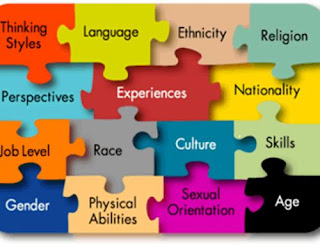Cultivating a Culture of Collaboration: The Art of Employee Relations in the Modern Workplace.
Managing Employee Relations Strategically for Sustainable Success
 |
| Figure 1 : Employee Relations Bond, https://cartoondealer.com/image/27839673/3d-man-puzzle-joining-team-work.html |
Employee relations are the bedrock of a healthy and thriving organizational environment. Managing relationships between employees and the organization, is crucial for fostering a positive workplace culture. Furthermore, employee relations plays a pivotal part in shaping the overall dynamics within an organization. Effective employee relations strategies can lead to increased employee engagement. Ineffective strategies and unaddressed issues may result building toxic work cultures that may be the ultimate downfall of any giant organization.
What is Employee Relations in HR perspective?
Employee relations is the practice of managing the relationship between employers and employees in the workplace. It involves fostering positive individual and collective relationships, emphasizing the connection between managers and team members, Its processes aims to cultivate mutual respect, trust and appreciation, building a strong company culture and a healthy work environment. It also involves advocating for employees, supporting them and addressing their concerns and conflicts to ensure a harmonious and productive workplace.
Employee relations includes Different aspects of the employer employee relationship:
 |
| Figure 2: Employee-Employer Relationship Aspects, Created by author |
2. Emotional: Emotional employee relations focuses on the psychological wellbeing and interpersonal dynamics within the workplace. It involves creating a supportive and positive work environment where employees feel valued, respected and motivated. Employee relations emphasizes on building trust, open communication and empathy between managers and employees. This includes addressing emotional concerns, providing peer support for personal and professional development and promoting a non-toxic culture of inclusivity and collaboration.
3. Contractual: Contractual employee relations pertain to the legal and formal aspects of the employer relationship as outlined in employment contracts, agreements and policies. This includes terms and conditions of employment, job definitions, job roles, responsibilities, working hours, compensation, benefits and other contractual obligations. Contractual employee relations also cover issues related to compliance with labor laws and regulations. It ensures fair and lawful treatment of employees with regards to company policies. Effective management of contractual employee relations involves clear communication of expectations, transparent policies, fair and consistent enforcement of contractual terms.
4. Practical: Practical employee relations include the day-to-day interactions, activities and processes involved in managing the employer-employee relationship effectively. This includes handling issues such as performance management, conflict resolution, disciplinary actions, employee grievances and communication within the workplace. Practical employee relations focus on promoting a positive work environment. It also involves implementing best practices policies and procedures to support employees, resolve conflicts by prioritizing practical employee relations.
The Importance of Employee Relations
Employee relations encompass the interactions, communication and overall relationship between employees and the organization. Strong employee relations are vital for promoting trust collaboration and engagement within the workplace. By prioritizing effective employee relations, organizations can create a supportive and inclusive environment where employees feel valued and motivated to contribute their best.
Employee Relations vs. Human Resources:
Examples of employee relations in modern workplaces:
 |
| Figure 4: Work place conflict management,https://visualstorageintelligence.com/managing-conflict-in-the-workplace/ |
2. Conducting performance evaluations: Providing feedback to employees on their performance, setting goals and discussing areas for improvement or development
3. Managing Conflicts: Mediating disputes between employees, teams or departments to promote a harmonious work environment and prevent escalations.
4. Employee onboarding & Conducting Exit Interviews: Orientation, training, introduction, setting goals and expectations for onboarding new employees and setting them up for success. As well as gathering feedback from departing employees to identify areas for improvement, address concerns and enhance retention strategies.
5. Absenteeism & Insubordinations: Managing absenteeism through tracking and monitoring employee attendance, addressing underlying reasons for absences, implementing policies and procedures to reduce absenteeism and provide support to employees who may face challenges that contribute to absenteeism. A well as dealing with insubordinations within an organization which disrupts workflows and undermine leadership, create negative work environment. Addressing in subordination requires clear communication of expectations, consequences for noncompliance, coaching and counselling to address underlying issues or disciplinary actions in accordance with the company policies and employment laws.
6. Employee engagement and motivation: Engaged employees are more likely to be productive, committed and satisfied with their work. Employee relations, play a key role in boosting employee engagement by recognizing and rewarding employees' contributions, providing opportunities for growth and development and creating a positive work environment that values employee wellbeing.
How to enforce effective employee relations strategically?
1. Communicate openly and transparently:
Establish clear channels of communication to keep employees informed about organizational goals, changes and initiatives. Encourage open dialogue, 2-way feedback and suggestions to ensure employees are heard and valued.
2. Build a culture of trust and respect:
Cultivate a culture where trust, respect and integrity are core values. Build a foundation where unethical practices can be reported without hesitation. Encourage collaboration, teamwork and mutual respect among employees and management.
3. Provide opportunities for grow and development: Offer trainings, professional development opportunities and career advancement paths.
4. Recognize and reward employee contributions: Implement recognition programs and reward employees for their hard work achievements and contributions. Celebrate milestones, successions and exceptional performance.
5. Address conflicts and grievances promptly: Establish clear processes for addressing conflicts and grievances. Provide a safe and confidential space for employees to voice their issues and work towards resolution in affair and a timely manner.
6. Promote work life balance and wellbeing: Offer flexible work arrangements, wellness programs and resources to help employees maintain a healthy work life balance.
7. Lead by example: Leadership should set a positive example for others to follow and create a culture of trust and collaboration Show empathy and fairness.
Conclusion:
Effective employee relations are essential for creating a positive work culture, enhancing employee satisfaction and driving organizational success by prioritizing trust, communication, engagement, conflict resolution, legal compliance and continuous improvement. Organizations can build a strong relationship with their employees, leading to increased productivity, morale and overall well-being in the workplace, nurturing positive connections through thoughtful employee relations practices. It is not only beneficial for employees, but also for the organization as a whole.
References:
1. Verlinden N. (Online), Employee Relations: Examples + 10 Strategy Tips, https://www.aihr.com/blog/employee-relations/, Accessed on 15-04-2024
2. https://www.bing.com/videos/riverview/relatedvideo?q=employee+relations+aspects&mid=65EBE662A69D2D27FADF65EBE662A69D2D27FADF&FORM=VIRE - (Online) Accessed on 15-04-2024
3. Boxall, P., & Purcell, J. (2016). Strategy and human resource management. Palgrave Macmillan.





The employees relations is vital factor of creating sustainable success to the organizations.
ReplyDeleteThis blog post offers a comprehensive exploration of employee relations, emphasizing its critical role in fostering a positive workplace culture and driving organizational success. By delving into various aspects of employee relations, such as physical, emotional, contractual, and practical dimensions, the post provides a well-rounded understanding of this essential function within HR. Additionally, the distinction between employee relations and human resources is clarified, offering clarity on their respective roles and responsibilities within an organization. The inclusion of examples from modern workplaces and strategic enforcement tips further enriches the content, making it a valuable resource for businesses seeking to cultivate a culture of collaboration and employee engagement. Overall, this post effectively highlights the importance of effective employee relations in nurturing positive relationships between employees and the organization.
ReplyDeleteThis blog post provides a comprehensive overview of the importance of employee relations in fostering a positive workplace culture and driving organizational success. By delving into various aspects of employee relations, from physical and emotional well-being to contractual and practical considerations, the post offers valuable insights into managing relationships between employers and employees strategically. Furthermore, the inclusion of examples from modern workplaces and actionable strategies for enforcing effective employee relations enhances the practical relevance of the discussion.
ReplyDeleteThis blog post provides a comprehensive overview of the importance of employee relations in fostering a positive workplace culture and driving organizational success. By delving into various aspects of employee relations, from physical and emotional well-being to contractual and practical considerations, the post offers valuable insights into managing relationships between employers and employees strategically. Furthermore, the inclusion of examples from modern workplaces and actionable strategies for enforcing effective employee relations enhances the practical relevance of the discussion.
ReplyDeleteYour thorough examination of the various aspects, from physical to emotional and contractual, truly highlights the multifaceted nature of fostering positive workplace dynamics.
ReplyDeleteThe Art of Employee Relations in Today's Workplace: Navigating Dynamics, Building Trust. In a rapidly evolving work landscape, fostering positive employee relations is paramount. This involves effective communication, conflict resolution, and creating a supportive environment where employees feel valued, ultimately enhancing productivity and organizational harmony.
ReplyDeleteThe post highlights the importance of effective employee relations in fostering a positive workplace culture and organizational success. It discusses various aspects of employee relations, including physical, emotional, contractual, and practical elements. By emphasizing communication, trust, conflict resolution, and employee development, organizations can strategically enforce positive employee relations, leading to increased engagement and productivity.
ReplyDelete